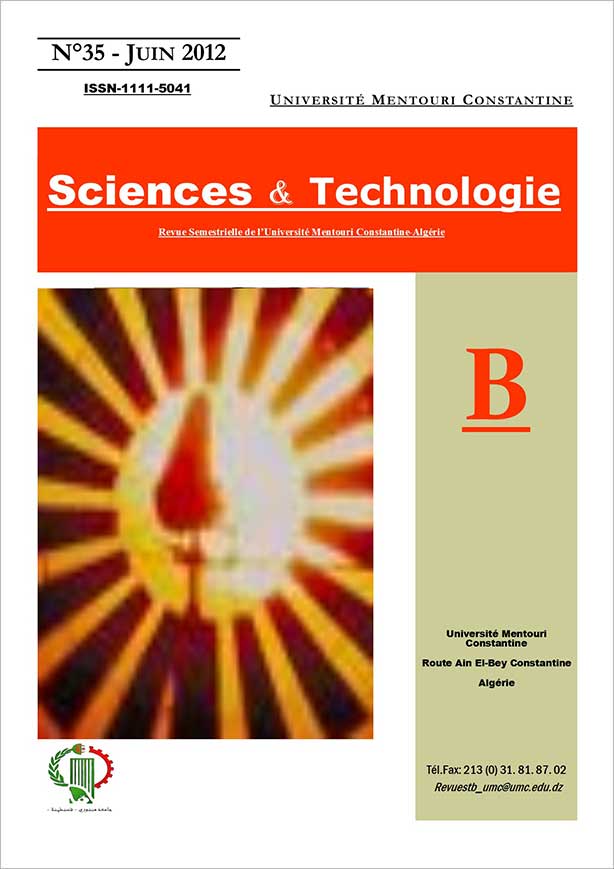AN INCREMENTAL NEURAL NETWORK FOR UNSUPERVISED CLASSIFICATION
Mots-clés :
Incremental learning, neural network, unsupervised classificationRésumé
This paper presents a novel unsupervised and incremental learning technique for data clustering that are polluted by noise using neural network approaches. The proposed approach is based on a self-organizing incremental neural network.
The design of two-layer neural network enables this system to represent the topological structure of unsupervised on-line data, reports the reasonable number of clusters and gives typical prototype patterns of every cluster without prior conditions such as a suitable number of nodes.
To confirm the efficiency of the proposed learning mechanism, we present a set of experiments with artificial and real world data sets.
Références
A.K, Jain., &, R.C Dubes,. “Algorithms for clustering data,” Englewood cliffs: Prentice Hall, 1988.
C.R., Lin, & M.S. Chen, “A robust and efficient clustering algorithm based on cohesion self-merging,” Proceedings of ACM SIG KDD, Edmonton, Alberta, Canada, 2002.
Artidis. Likas, Nikos. Vlassis, and Jakob. Verbeek, “The global K-means clustering algorithm,” Pattern Recognition, Volume 36, Number 2, 2003.
S. Khy, Y. Ishikawa, and H. Kitagawa, “Novelty-based incremental document clustering for on-line documents,” In ICDE Workshops, pp. 40, 2006.
D.J. Willshaw, Vonder. Malsburg, and E.F. Roberts, “How patterned neural connections can be set up by self-organization,” Proceeding of the Royal Society of London, B, 194, pp. 431-445, 1976.
T. Kohoen, “Self-organized formation of topologically correct feature maps,” Biological Cybernetics, 43 ,pp. 59-69, 1982.
T. Martinetz, and K. Schulten, “Topology representing networks,” Neural Networks, 7(3), pp. 507-552, 1994.
T., Der, R. ,Villmann, M. Herrmann, and T. Martinetz, “Topology preservation in Self-organizing feature maps: Exact definition and measurement,” IEEE Transaction on Neural Networks, 8(2), pp. 226-256, 1997.
T. Villmann, F.M. Schelif, and B. Hammer, “Supervised neural gas and relevance learning in learning vector quantization,” Proceedings of the workshop on Self-organizing Maps(WSOM), Japan, 2003.
T. M. Martinetz, “Competitive Hebbian learning rule forms perfectly topology preserving maps,” Journal, ICANN, pp. 427-434, 1993.
T. M. Martinetz, S.G. Berkovich, and K.J. Schulten, “Neural-gas network for vector quantization and its application to time-series prediction,” IEEE Transaction on Neural Networks 4(4), pp. 507-552, 1993
B. Fritzk, C, “A growing neural gas network learns topologies,” Advances in neural information processing systems (NIPS), pp. 625-632, 1995.
J. Bruske, and G. Sommer, “Dynamic cell structure learns perfectly topology preserving map,” Neural computation, 7, pp. 845-865, 1995.
B. Fritzk, “A Self-organizing network that can follow non-stationary distributions,” Proceedings of ICANN-97, pp. 613-618, 1997.
Y. Prudent, and A. Ennaji, “Extraction incrémentale de la topologie des données ,” Laboratoire PSI, Université et INSA de Rouen, F-76821, France, 2000.
F. Shen, and O. Hasegawa, “An incremental Network for on-line unsupervised classification and topology learning,” Neural Network, Vol. 19, pp. 99-106, 2006.
F. Shen, and O. Hasegawa, “An on-line learning mechanism for unsupervised classification and topology representation,” CVPR. 2005, San Diego, CA, USA, June, 20-26, 2005.
S. Guha, R. Rastogi, and K. Shim, “CURE: An efficient clustering algorithm for large databases,” Proceeding of ACM SIGMOD Conference on Management of Data , pp. 73-84, 1998.
F. Rousseau, Description et classification de cellules drépanocytaires. Mémoire de Master, Université d'Evry Val d'Essonne, 2007.
Arnal C. et Girot R. Drépanocytose chez l'adulte. Encycl Méd Chir (Éditions Scientifiques et Médicales Elsevier SAS, Paris), Hématologie, 13-006-D-16, 2002, 15 p.
Téléchargements
Publié
Numéro
Rubrique
Licence
Les auteurs publiant dans cette revue acceptent les termes suivants :- Les auteurs détiennent le droit d'auteurs et accordent à la revue
le droit de première publication, avec l’ouvrage disponible simultanément [SPÉCIFIER LA PÉRIODE DE TEMPS] après publication, sous la licence Licence d’attribution Creative Commons qui permet à d'autres de partager l'ouvrage en en reconnaissant la paternité et la publication initiale dans cette revue. - Les auteurs peuvent conclure des ententes contractuelles additionnelles et séparées pour la diffusion non exclusive de la version imprimée de l'ouvrage par la revue (par ex., le dépôt institutionnel ou la publication dans un livre), accompagné d'une mention reconnaissant sa publication initiale dans cette revue.
- Les auteurs ont le droit et sont encouragés à publier leur ouvrage en ligne (par ex., dans un dépôt institutionnel ou sur le site Web d'une institution) avant et pendant le processus de soumission, car cela peut mener à des échanges fructueux ainsi qu'à un nombre plus important, plus rapidement, de références à l’ouvrage publié (Consulter The Effect of Open Access).

